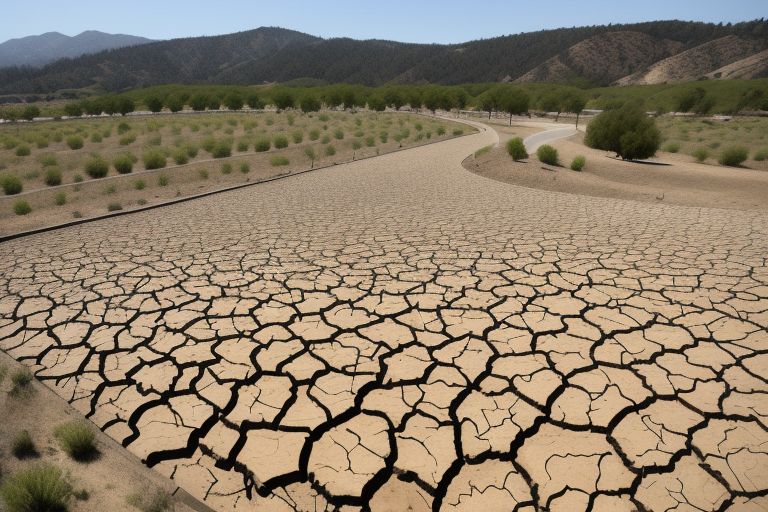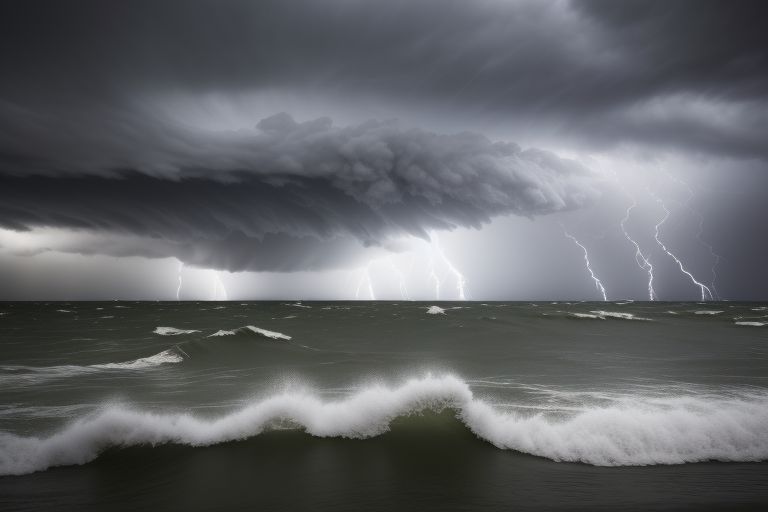California faces one of the worst droughts ever seen due to extended dry weather and increasing heat levels that challenge the state’s water supply. The current crisis affects agriculture and wildlife as well as urban water supplies while urging officials to adopt tough conservation methods and seek creative solutions for the increasing water shortage.
Having emerged in 2020 and intensified by climate change the current drought closely matches the 2011-2017 low rainfall cycle deemed the most arid in California history. Fast alternating dry spells have created limited time for water reserves to recover and have tremendously increased pressure on the state’s water management infrastructure.
Snowpack levels in the Sierra Nevada range have fallen sharply because of the drought. About 30% of California’s water supply comes from snowpack which acts as an organic reservoir that slowely releases water throughout the spring and summer. As temperatures rise significantly in winter months the snowfall decreases and melting begins earlier.
The reservoirs such as Lake Shasta and Lake Oroville find themselves at exceedingly low counts. By September 2024 numerous reservoirs stand at less than 50% of their typical values for this period. Water managers have been compelled to make tough allocation decisions due to this scarcity as they cut back on deliveries for farmers and some city residents.
California’s agricultural sector, which produces over a third of the country’s vegetables and two-thirds of its fruits and nuts, has been hit particularly hard by the drought. Due to the drought conditions many farmers have been compelled to leave farmland fallow resulting in job cuts and financial challenges for communities far away. As a result of California’s important agricultural product role in the national food system food prices have increased nationally.
The consequences for the environment due to the drought are equally strong. Shortened water movements in waterways have produced hotter water and less oxygen endangering fish biodiversity and endangered species such as Chinook salmon. Wetland environments have contracted reducing vital habitats for migratory birds and other animals.
State and local authorities have taken various steps to save water and boost supply in reaction to the crisis. Governor Gavin Newsom urges a 15% cut in water usage across the state as several local water authorities implement strict water reduction rules outside. Cities in some regions have made advancements by encouraging residents to exchange thirsty turf for low-water needs gardening.
The state is speeding up initiatives to upgrade its water system. Restoration efforts for deteriorating aqueducts and canals are in progress to enhance both water efficiency and minimise leakage. There is an increasing emphasis on enhancing the utilisation of recycled water and nurturing groundwater practises for achieving more sustainable sources of local water.
Several coastal communities are investigating or putting into practise projects aimed at turning seawater into drinking water using the technique of desalination. Desalination may provide a sure water supply during a drought but is still debated over its high energy expenses and the risks to marine habitats.
As a result of the drought a new wave of focus has appeared on water markets and our systems help to better manage the allocation of water resources. Backers believe these methods improve the efficient use of water during periods of need. etheless,Vegetation aficionados are anxious about speculation and its effect on farming and rural communities.
California’s drought is now felt more in other states. A severe drought affects the Colorado River serving crucial water needs for seven Western states including California. This has resulted in unusual cuts to water supplies from the river,reinforcing California’s water difficulties and requiring improved collaboration from Western states to handle common water resources.
The continuing drought emphasises the relationship between energy and water systems. California has increased its dependence on natural gas and other sources of energy as hydroelectric generation decreases.
Experts predict that droughts similar to the ongoing one might occur with increased frequency and intensity owing to climate change. This grim situation has inspired a need for fundamental changes in water management practises in California that focus on developing lasting resilience instead of just reacting to specific droughts.
Actions are being initiated to refine drought forecasting and the early warning systems that allow water managers and users to prepare and respond to dry times more effectively. Acknowledgement of the demand to advance climate change scenarios into enduring water resource and infrastructure decisions is on the rise.
The drought has fueled fresh discussions regarding water rights and allocation decisions in California. As officials look for better approaches to water management during shortages the existing water rights system from the 19th century has received critical review.
In response to this lengthy drought California reflects on the instability of its water supplies due to a shifting environment. The way California and other states in the West respond to this challenge will probably define future approaches to water management.
Innovations have emerged from the drought by motivating examinations of drought-resistant plants and cutting-edge irrigation solutions as well as techniques for gathering and preserving water. These changes will be vital for California and other regions internationally confronting comparable water obstacles.
With drought in its fifth year,Californians start to cope with less plentiful water resources. To combat the water dilemma effectively measures and innovations are uniting with personal habits and pursuits. Although the hurdles appear overwhelming,the combined actions against this significant drought might lead to a healthier water landscape in California.







Leave a Reply